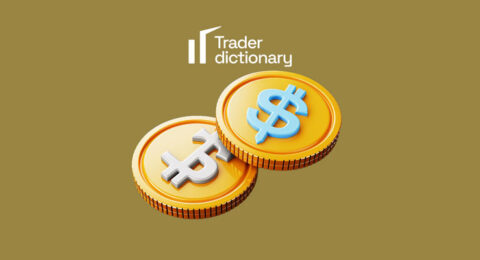Have you ever wondered how investors manage to minimize risks in the constantly changing market landscape? Or how they can seize the opportunities the market presents without having to commit their entire capital? The answer might lie in options contracts – a tool that we will delve deeper into throughout this article, exploring its essence, operation, and practical applications in the financial world. Let’s start this journey of discovery together, to broaden your knowledge about options contracts and how they can become an indispensable part of your investment strategy.
What is an Options Contract?
Simply put, an options contract is a type of contract that gives you, the buyer, the right – but not the obligation – to buy or sell a specific asset at a predetermined price at a specific time.
There are two main types of options contracts: call options and put options. A call option gives you the right to buy an asset, while a put option allows you to sell it. Interesting, isn’t it?
The beauty of options contracts is that they allow investors to speculate or hedge their risks. For example, you can use options to protect yourself from unforeseen market fluctuations. Or, if you feel adventurous, you can use them as a way to speculate, hoping that the price of the asset will move in the direction you expect.
I find that many beginners are hesitant about options contracts because they think they are complicated. But trust me, once you understand the nature of them, you’ll see they are not so scary at all. Let’s explore further in the following sections!
Important Things to Know
When talking about options contracts, there are some extremely important points that you need to know:
- Basic Nature: Options contracts are a type of financial contract. They give the buyer the right, but not the obligation, to buy or sell a specific asset at a predetermined price.
- Types of Contracts: There are two main types: call option and put option. Each type has different ways of working and purposes.
- Expiry Date: Options contracts have a specific expiration date. After this date, the contract becomes worthless.
- Strike Price: This is the price at which the buyer of the options contract can buy (or sell) the underlying asset.
- Option Premium: The amount the buyer of the contract pays the seller to acquire this right.
- Risks and Benefits: Options contracts can offer high profits but also carry significant risks. Market volatility can significantly affect the value of the contract.
- Use in Speculation and Risk Hedging: They are often used for speculation or risk hedging in investments.
- Legal and Regulatory: Options contracts are regulated by regulatory bodies and must follow certain legal rules.
Understanding Options Contracts
First, let’s consider the basic structure of an options contract. An options contract includes key elements such as the strike price, expiration date, and type of option (buy or sell). Each of these elements has a significant impact on how and for what purpose the contract is used.
The strike price is the price at which the buyer of the contract can decide to buy or sell the underlying asset. It acts as a fixed price mark at which investment decisions are made. The expiration date determines when the options contract becomes ineffective. This is an important moment for the buyer to decide on action.
The type of option determines how you will interact with the contract. A call option (call option) gives you the right to buy the underlying asset, while a put option (put option) allows you to sell. The choice between these two types depends on your investment strategy and market perception.
Types of Options Contracts
1. Call Option (Call Option)
In the world of options contracts, Call Options play an undeniable role. Here are some basic and important points about Call Options:
- Basic Definition: A Call Option (Call Option) is a type of options contract that gives the buyer the right, but not the obligation, to buy an underlying asset at a predetermined price within a specific period.
- When to Use: They are often used when you expect the price of the underlying asset to rise. You buy a call option hoping to buy the asset at a lower price than the future market price.
- Profit and Risk: The profit from a Call Option can be unlimited (as the price of the asset can rise indefinitely) but the risk is limited to the option fee paid.
- Option Premium (Premium): This is the amount the buyer of the option must pay to the seller. This fee depends on many factors such as time to expiration, volatility of the underlying asset, etc.
- Strike Price (Strike Price): This is the price at which the option buyer can buy the underlying asset. It is a key factor in determining the value of the option.
- Expiration Date: Each Call Option has a specific expiration date. When this date arrives, the contract becomes worthless if not exercised.
- In-the-money and Out-of-the-money: A Call Option is called “in-the-money” when the market price of the underlying asset is higher than the strike price, and “out-of-the-money” when the opposite is true.
2. Put Option (Put Option)
Put Option, or Put Option, is another interesting aspect of the options contract market. Let’s learn more about Put Options through the following points:
- Basic Definition: A Put Option (Put Option) is a type of options contract that gives the buyer the right, but not the obligation, to sell an underlying asset at a predetermined price within a specific period.
- When to Use: Put Options are often used when you expect the price of the underlying asset to decrease. Buying a put option allows you to sell the asset at a higher price than the future market price.
- Profit and Risk: The profit from a Put Option is limited to the strike price minus the option fee, but the risk can be unlimited (as the price of the asset can drop sharply).
- Option Premium (Premium): This is the amount the buyer of the option must pay to the seller. This fee is similar to that in a Call Option, depending on many factors.
- Strike Price (Strike Price): This is the price at which the option buyer can sell the underlying asset. It is a key factor in determining the value of the option.
- Expiration Date: Put Options also have a specific expiration date, after which the contract becomes worthless if not exercised.
- In-the-money and Out-of-the-money: A Put Option is called “in-the-money” when the market price of the underlying asset is lower than the strike price, and “out-of-the-money” when the opposite is true.
Examples of Options Contracts
To better understand Options Contracts, I will provide you with some illustrative examples. These examples will help you visualize more clearly how options contracts work and their application in practice.
- Example of Call Option (Call Option): Suppose you buy a Call Option for XYZ company’s stock at a strike price of $100 per share and an option fee of $5. If the stock price rises to $120, you can exercise the option and buy the shares at $100, then sell them on the market at a higher price, earning a profit.
- Example of Put Option (Put Option): Suppose you buy a Put Option for ABC company’s stock at a strike price of $50 per share. If the stock price drops to $30, you can buy shares on the market at a low price and use the option to sell them at $50, earning a profit.
- Hedging (Risk Insurance): Suppose you own shares of XYZ company and are concerned that their value might decrease. You can buy Put Options to hedge the risk. If the stock price drops, the loss from the drop in stock value will be somewhat offset by the profit from the Put Options.
- Using Options for Speculative Purposes: An investor can buy Call Options expecting the stock price to rise. This is a way to take advantage of market volatility to earn profits without actually owning the stock.
- These examples show that options contracts are not only flexible investment tools but can also be used to hedge risks and optimize profits. I find that understanding and applying them intelligently can bring many benefits to investors.
What Happens When an Options Contract Expires
When talking about options contracts, an important point to consider is what happens when the contract expires. This is the decisive stage that every options investor needs to understand.
- Determine the Status of the Contract: When it expires, the options contract can be in one of three states: in-the-money, at-the-money, or out-of-the-money. This status depends on the relationship between the strike price and the market price of the underlying asset.
- In-the-money (ITM): If the call option (Call Option) expires and the market price of the underlying asset is higher than the strike price, or the put option (Put Option) expires and the market price is lower than the strike price, then the contract is considered in-the-money.
- Out-of-the-money (OTM): Conversely, if the market price is not favorable compared to the strike price, the contract will expire without value, or in other words, is out-of-the-money.
- At-the-money (ATM): This is the case when the market price and the strike price are almost equivalent when the contract expires.
- Exercise the Option (Exercise the Option): In the case of an in-the-money contract, the buyer has the right (but is not obliged) to exercise the contract, i.e. buy or sell the underlying asset according to the agreed terms.
- Expired Worthless: For out-of-the-money contracts, the contract will expire without being exercised, causing the buyer to lose the option fee paid.
- This process shows that managing options contracts not only stops at the initial buying and selling but also includes monitoring and making smart decisions when the contract reaches its expiration date.
Related Questions
When talking about options contracts, there are several common questions that I often encounter from people new to this topic. Let’s look at some related questions and explain them:
- How do you determine the price of an option contract?: The price of an option contract is determined based on many factors, including the price of the underlying asset, expiration date, volatility of the asset, and risk-free interest rate. This is a complex process that requires solid financial knowledge.
- What is the risk of an option contract?: The main risk for the buyer in an options contract is the loss of the entire option fee if the contract expires worthless. For the seller, the risk can be much greater, especially in the case of selling call options.
- Why do people use options contracts?: The main purposes are for speculation and risk hedging. Options contracts provide the opportunity to capitalize on price fluctuations without needing to own the actual asset, and also allow the owners of the underlying assets to hedge against unfavorable price movements.
- How are options contracts different from stocks?: Unlike stocks, options contracts do not represent ownership in a part of a company. They are contracts that provide the right to buy or sell an underlying asset, not the asset itself.
Conclusion
Concluding the article “What Are Options Contracts? A Financial Explainer!”, we hope you now have a clear and comprehensive understanding of options contracts – a powerful and flexible financial tool. Together, we’ve explored basic concepts, how they function, and even strategies that can be applied to maximize benefits from options contracts in your investment activities. Whether you’re an individual investor looking to protect your investment portfolio, or a professional trader aiming to leverage market volatility, options contracts can offer unique opportunities not readily available with other financial instruments.
Remember, while options contracts offer many opportunities, they also come with risks. Equipping yourself with thorough knowledge and deep understanding of this financial product will be key to using options contracts effectively and safely. We wish you success on your journey to explore and apply options contracts to your investment strategy. Continue to follow our blog for more valuable and exciting knowledge about the world of finance!









